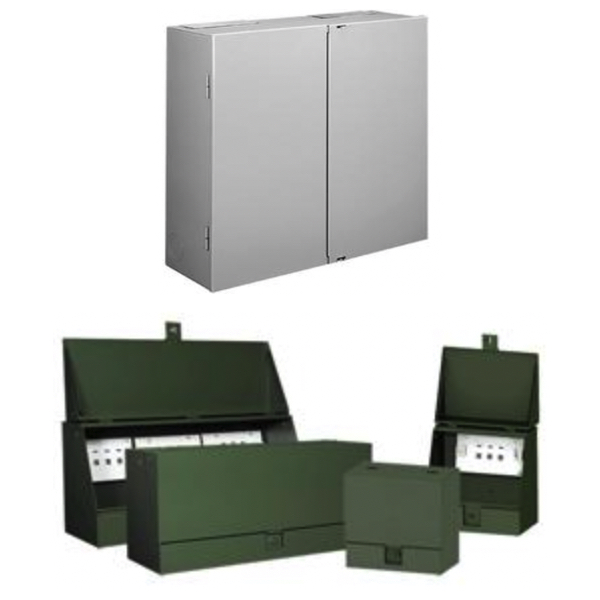Electrical Utility Enclosures

Utility enclosures serve a crucial purpose: They protect delicate electrical equipment and make sure that everything functions reliably and safely in utility contexts. These enclosures—made from materials like polymer concrete, fiberglass, or carbon steel—are not likely to corrode or be otherwise damaged in an outdoor environment. And their assembly, whether by welding, bolting, or some other means of connection, meets the standards of the National Electrical Manufacturers Association (NEMA). That means whatever's inside also meets the NEMA standards for protection against water, dust, and all sorts of other nasty environmental stuff.
Electrical utility enclosures have various subcomponents that serve to make the enclosure's primary function easier and to ensure that the box serves its mandate for a good long while. But there are few subcomponents as useful as pull boxes and junction boxes. These boxes serve basic functions that, if you think about it, are just right for any kind of housing or "shelter" for electrical apparatus. They make wiring simpler and protect connections in the service of either telecommunications or power-distribution systems or both.
More Information about Electrical Utility Enclosures
Enclosures for electrical utilities are designed for modularity and customization, permitting them to fulfill a broad swath of electrical utility specifications. They tend to feature options for indoor and outdoor use, and even for some very specific environments like utility substations, water treatment plants, or telecommunications hubs. What's more, diverse options for construction and materials mean that you can find the kind of enclosure you need for the level of durability, security, and environmental resilience that your application calls for.
FAQs
Are pull boxes and junction boxes durable enough to be considered commercial utility enclosures?
Yes, pull boxes and junction boxes are durable enough to be considered commercial utility enclosures, as they are designed to protect and organize electrical connections in commercial and industrial environments.
What are the features and specifications of polymer concrete in the construction of utility enclosures?
Polymer concrete utility enclosures are characterized by their high strength, chemical and water resistance, UV and thermal stability, electrical insulation, impact resistance, lightweight nature, and low maintenance requirements.
Are there electrical utility enclosure models that can be installed below ground?
Yes, certain electrical utility enclosure models, such as those made from polymer concrete, are designed for below-ground installation, providing durability and protection in buried applications.
Enclosure Selection Basics
Electrical enclosures are cabinets that are designed to house electrical components. Their main function is to protect the components, as well as to protect the operators from electrical hazards. Enclosures are typically made of solid plastics, fiberglass and metal materials, such as carbon steel, stainless steel and aluminum.
One of the most important things to consider when selecting an electrical enclosure is the NEMA rating. NEMA stands for National Electrical Manufacturer Association. They have developed a rating system which determines the types of environments an electrical enclosure can be used in.
NEMA 1 and a NEMA 12 enclosures
Both of these enclosures are intended for indoor use only. They are both dust resistant. The NEMA 12 enclosure is rated for damp environments. The NEMA 1 is rated only for dry environments.
NEMA 4 and NEMA 4X enclosures
Both of these enclosures can be used indoors as well as outdoors. They are both dust resistant. They are also water resistant and corrosion resistant. NEMA 4X has an extra layer of corrosion resistance.
NEMA 7 enclosures
This is a more specific type of enclosure that is rated for use in hazardous environments. It is rated to contain an explosion within the enclosure and not cause any sort of external hazard.
Size
When selecting the size of an enclosure, it is important to consider the following: how much space will the electrical components occupy, how much space is needed around each component, is there enough room to run all of the wires and how much space is needed outside of the enclosure?
Temperature
When selecting an enclosure, it is important to consider both the ambient temperature and the temperature that is generated inside of the enclosure. When an enclosure is located outside in direct sunlight, that heat can be transferred inside the enclosure. Also, each component inside of the enclosure generates a certain amount of heat.

